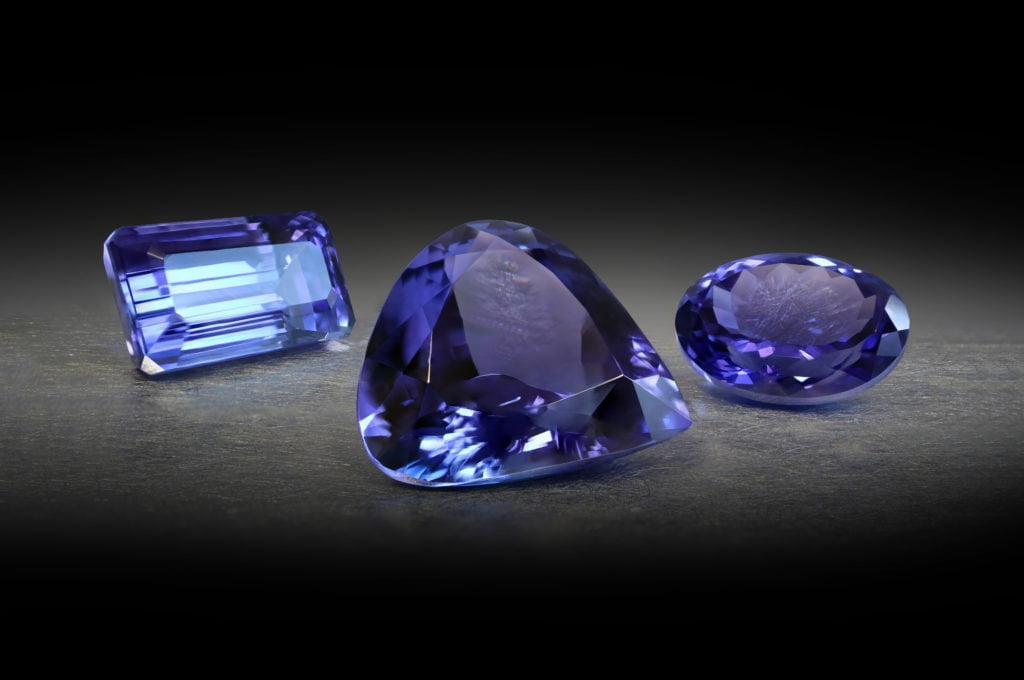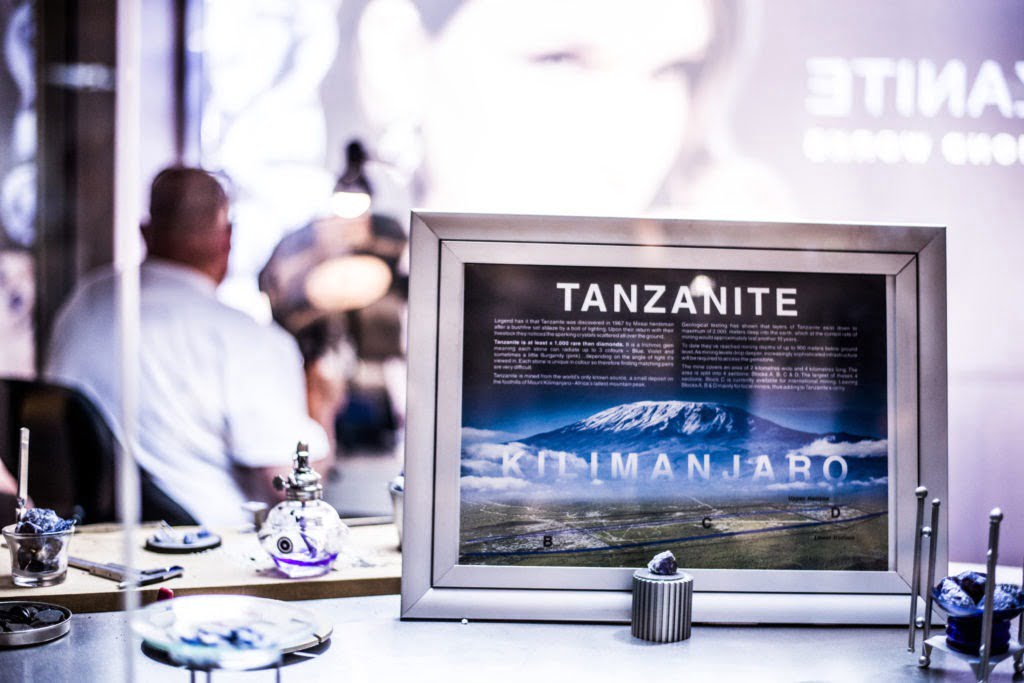Tanzanite Grading
Gemological Properties of Tanzanite
Heading #3 | |
|---|---|
Colour | Blue with indigo, violet and purple undertones (occasionally green and rarely peach tones) |
Lustre | Vitreous |
Composition | Calcium Aluminium Silicate |
Family | Zoisite |
Mohs Scale Hardness | 6.5 – 7 |
Specific Gravity | 3.1 – 3.4 |
Refractive Index | 1.69 – 1.70 |
Crystal System | Orthorhombic |
Transparency | Transparent |
Chemical Formula | Ca2Al3(SiO4)3(OH) |


Tanzanite, one of the most captivating gemstones in the world, is treasured for its stunning color and rarity. Found exclusively in the foothills of Mount Kilimanjaro in Tanzania, this gemstone displays a mesmerizing range of hues, from deep blue to vibrant violet, depending on the angle of light. Tanzanite belongs to the zoisite mineral family and is prized for its remarkable pleochroism, meaning it exhibits different colors when viewed from various directions. Rated at 6 to 7 on the Mohs scale of hardness, tanzanite is both delicate and durable enough for fine jewelry, requiring careful handling. Its unique beauty, coupled with its single-source origin, makes tanzanite a symbol of luxury and a cherished treasure in the world of gemstones.
Tanzanite Colour
The rich colour of the finest tanzanite is quite unique in the gemstone world and in the case of tanzanite, colour is so important that it outweighs almost all other grading considerations.
In exceptional tanzanites, the colour is an intense violetish blue with red flashes of pleochroic colour coming from within the stone. Due to the gem’s strong pleochroism, fashioned examples typically show a mix of both blue and violet colours in a wide range of tones. As with most coloured gemstones, paler colours are more available and affordable than saturated ones.
Tanzanite Cut
Cutting plays an important role in tanzanite’s colour display. Because of its pleochroism—the ability to show different colours when viewed in different crystal directions—cutting direction determines the gem’s overall face-up colour.
Cutters consider financial realities when they decide how to cut tanzanite. As with other gems, weight lost is profit lost. Cutting a tanzanite to emphasize the violet-to-purple colour usually wastes less rough than cutting it to get a violetish blue colour. That is part of the reason face-up violet-purple tanzanites are more plentiful than specimens with a stronger blue colour component.
But this decision must be balanced against the higher per-carat price that the finer violetish blue colour might bring. The cutter essentially makes a choice between a smaller top-colour gem and a larger violet-purple one.
Carat Weight
Tanzanite is available in a wide variety of sizes, shapes, and faceting designs. The finest and deepest colours are usually seen in sizes over 5 carats. Smaller stones are often less intense in colour.
The top quality, deeply saturated tanzanite gemstones make up only 0.13% of mined tanzanite available globally and are becoming increasingly harder to uncover.
The rarity and beauty of tanzanite could not be ignored, and in 2002, The American Gem Society acknowledged the stone, by registering tanzanite as an official birthstone for the month of December.
Experience the process
In appreciation of this captivating gem, The Diamond Works tells the historic tale of tanzanite, showcasing a first-hand cutting and polishing demonstration and wide range of the most elegant tanzanite jewellery pieces – offering the opportunity to take home a piece of rare African beauty.



